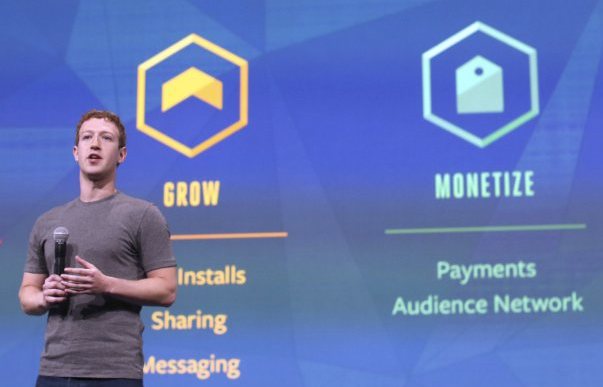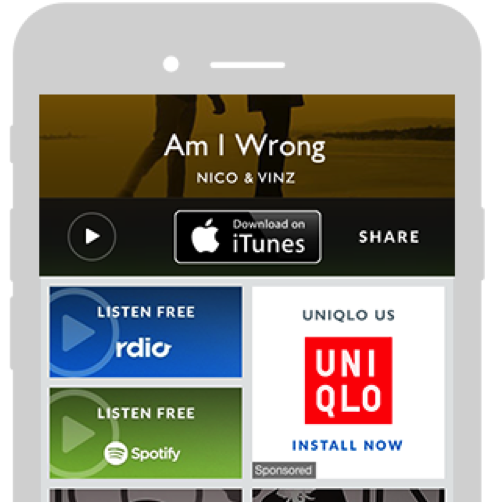Facebook’s Audience Network puts native ads everywhere (and publishers are on board)

Just ask Bilbo Baggins — there’s something very appealing about having one ring to rule them all. So it goes with the Facebook Audience Network, which was launched in 2014 to help digital marketers place ads across all mobile apps — not just Facebook’s — using a single platform while making it easier for publishers to monetize those apps.
So far, the numbers are proving the concept to be sound: According to Facebook’s most recent earnings call, mobile use and revenue are up. And both advertisers and publishers are enjoying stronger performance.
To learn more about the Audience Network’s goals — and challenges — we spoke with Sriram Krishnan, Facebook’s specialist in monetizing mobile for publishers.
Industry-wide, mobile took a long time to get going. Even at Facebook, you had a number of false starts. Why is it taking off now?
There are a couple of things that happened in the last two years. One, you’ve seen more and more people spend time on mobile, and you can see this reflected in people using [mobile devices] every single day. [One billion of Facebook’s 1.39 billion total monthly users access the service on mobile.]
Ad position: web_incontent_pos1
The other is the user experience. On your phone, you don’t have a lot of real estate, so it’s really important to show an experience that is interesting and engaging… That’s what you call native ads, and that’s a big part of the success we’ve been experiencing on mobile.
So native advertising is central to this explosion?
 Let’s take Shazam for example. If you look at the ads inside their app, it looks like part of the Shazam app. It’s not intrusive. It just looks like part of an app in its very design… Shazam has seen a 37% increase in ad network revenue.
Let’s take Shazam for example. If you look at the ads inside their app, it looks like part of the Shazam app. It’s not intrusive. It just looks like part of an app in its very design… Shazam has seen a 37% increase in ad network revenue.
Ad position: web_incontent_pos2
That’s one pillar [of native advertising].
The other pillar is about focusing on people-based marketing. If you’re an advertiser, we can help you reach the right audience on multiple devices — be they on a phone, be they on a desktop browser.
A lot of players are going for cross-device capability. What makes Audience Network any different?
We asked, “How can every single publisher on mobile and every app developer offer ad experiences in their apps that match their other experiences?” For example, if you have an app that shows a list of things, how do you have an ad that looks like another thing [in that list]? If you have an app that can swipe, can you have an ad that swipes, too?
So the plan is to run these kind of native ads on a seamless mobile app ecosystem, with Facebook’s infrastructure providing the backbone?
Exactly. This is what we mean by “people-based marketing.” For advertisers, you want to reach the audiences you care about [with] ads that make you want to click on them and buy things, or just go check them out.
Making it work for both advertisers and publishers has been a big thing for us.
Customizing even a few ads for a native app experience seems like a lot of extra work. Is any of this automated?
If you’re a publisher today who has standard units, you can drop us right in. We will take the advertising demand that we have [and] basically bring that demand to you.
But that sounds like every other ad server.
It gets more interesting with native. We’ve given publishers an API, samples, and tools to say, “Here’s this ad creative, here’s the text. Now you, as a publisher, you have a great engineering team that can make the ad fit your needs.”
As a publisher, you now have the best of both worlds. If you want to just drop us in, we do the work to reformat and reshape ads. If you want to go native, you can take the ads further.
So you’re making a bet that the more native the ad, the fewer objections you’ll encounter from users.
Exactly. We really do believe that native ad experiences are better for everyone. I don’t want something that suddenly pops up or interrupts me. I want something that looks like part of the app. This, in turn, leads to better performance from a monetization perspective.
More from Digiday
Sliders test article
Agencies hope connected TV and digital out-of-home will play a bigger role in upcoming elections and politics — especially for smaller media agencies that are handling many of the less visible races in the crowded political space. For a number of media agencies looking to place their political ad dollars down in this major election […]

How CTV and DOOH are growing this political season for smaller agencies
Connected TV and digital out-of-home are playing a bigger role in upcoming elections and politics – especially for smaller agencies looking to place clients’ dollars.

CMO Strategies: Advertisers identify the top attributes on ad-supported streaming platforms
This is the third installment in Digiday’s multi-part series covering the top ad-supported streaming services and part of Digiday’s CMO Strategies series. In this report, we examine which ad attributes matter the most to marketers on streaming platforms.
Ad position: web_bfu